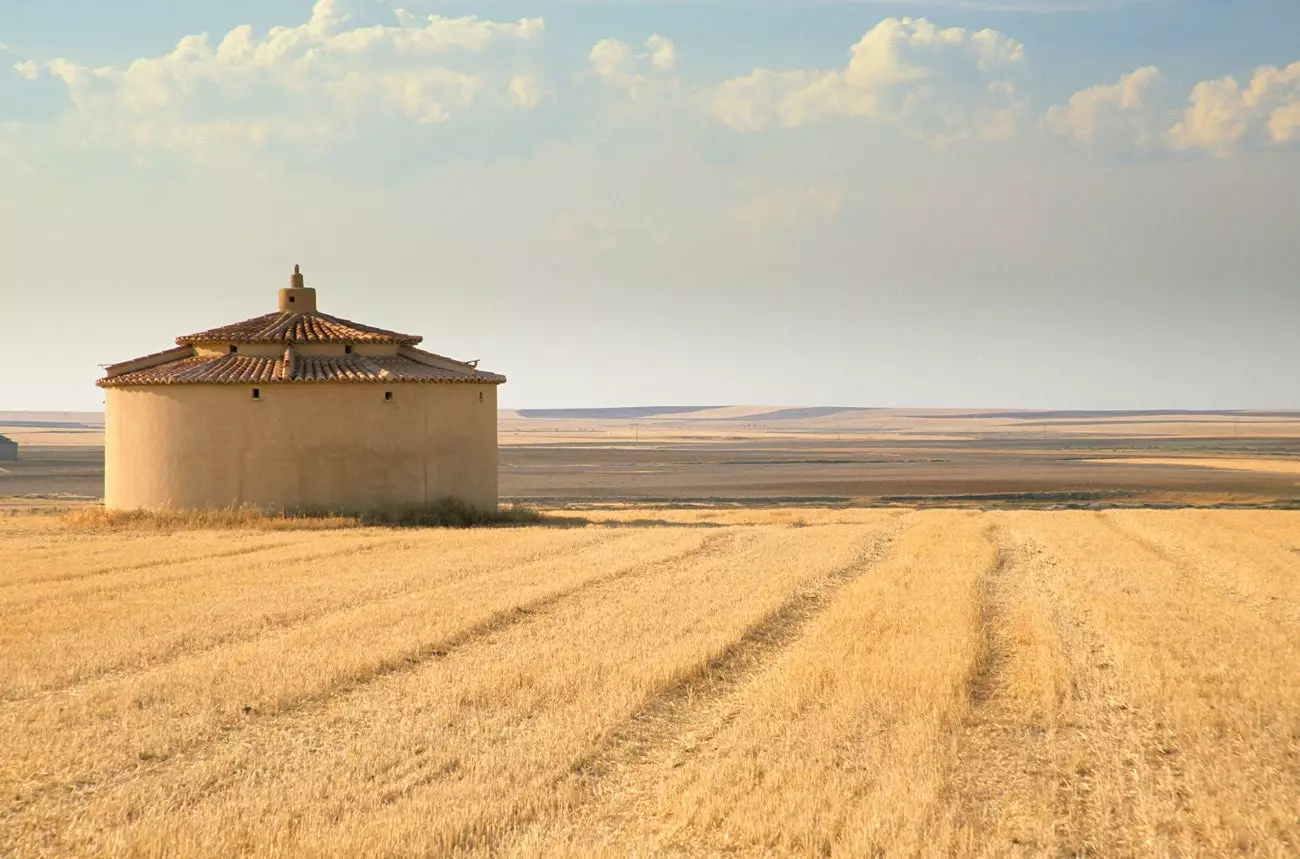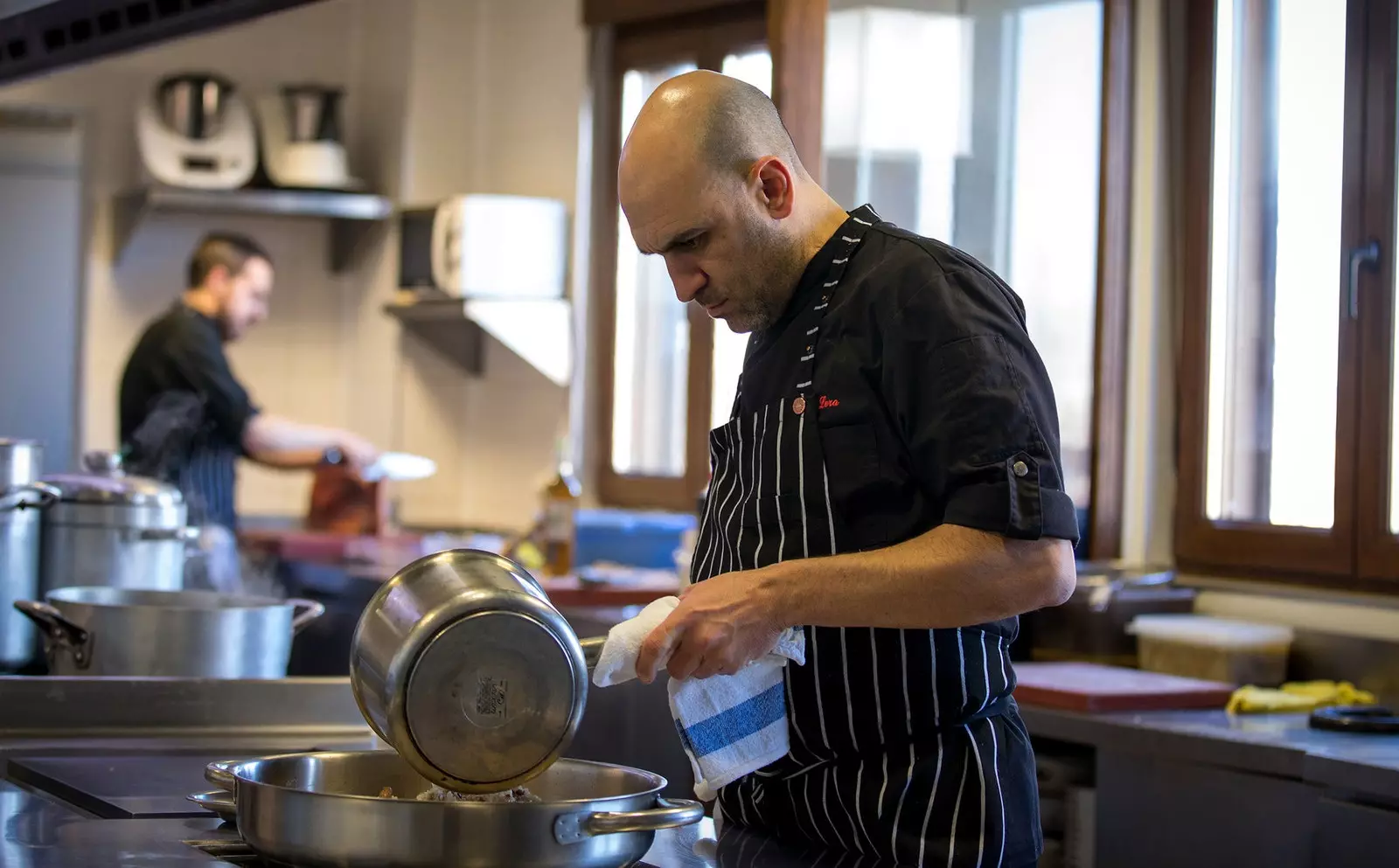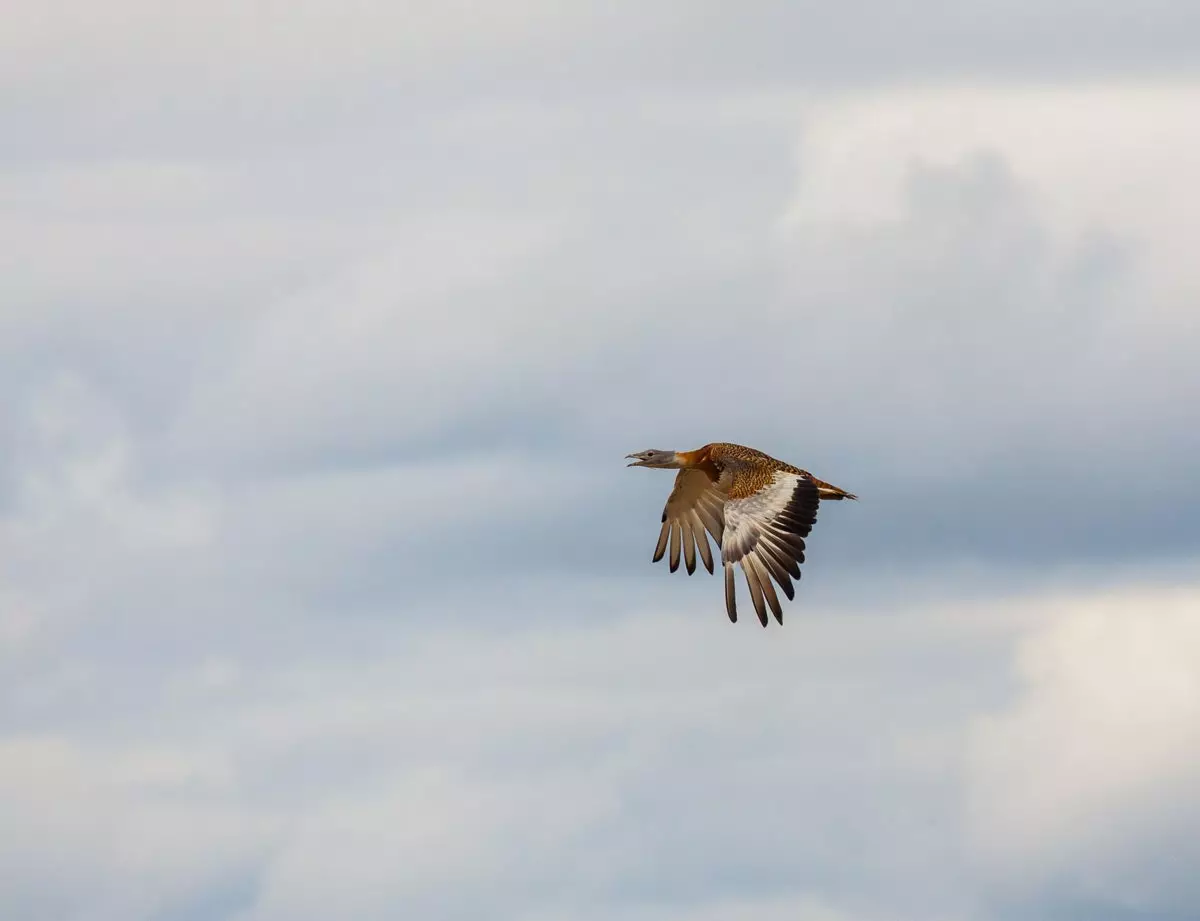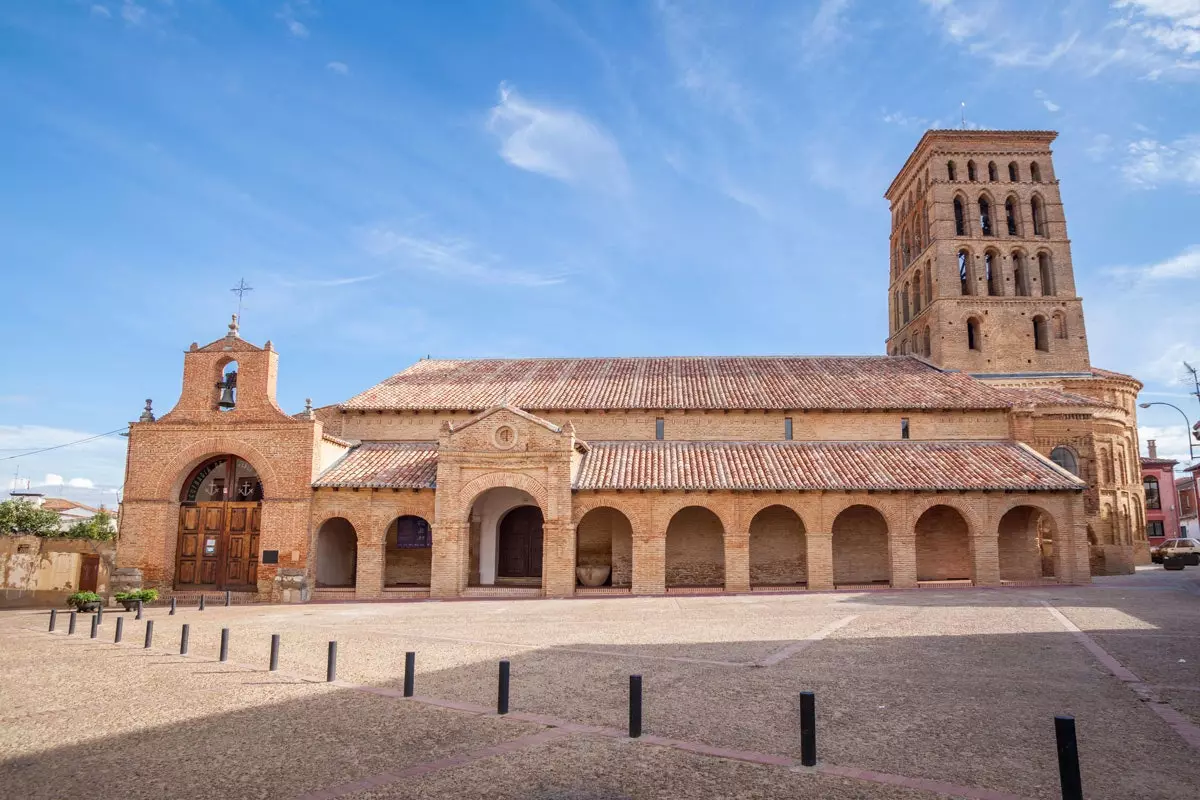
Dovecote in Zamora
It is easy to imagine the flat landscape that dominates the region of Farmland. on the plateau of Castile and Leon This kind of rectangle inclined in a northeast-southwest direction extends for approximately 5,000 km2 of the provinces of, above all, Palencia and Valladolid and, to a lesser extent, Zamora and Leon. The common denominator of this region will be guessed quickly, surely: hectares of golden and brown tones product of the fields of wheat and barley that for centuries have been the main economy of the region. But there is much more than fields in Castile.
If in the first part of this route, we enter Palencia and Valladolid; In this second installment, we set out to discover the Zamorano and Leonese side of Tierra de Campos.
A CELTIC FORT
Bordering with Valladolid, it is Villamayor de Campos the first town that the visitor finds in the province of Zamora. With scarcely 300 inhabitants registered, it is worth stopping in this small town to discover its restored St. Stephen's Church , from the 13th century, whose interior has one of the best Mudejar armor in the province and houses the White Carpentry Interpretation Center, created by the Junta de Castilla y León to better understand this peculiar carpentry technique. Of course, you need to first contact the Association of Friends of San Esteban to be able to visit it.
What does not need an appointment is the hill that rises imposingly across the ** Valderaduey River **. Outsiders will think that it is a second town, actually in ancient times it was, as it is recorded that there was a Celtic or Celtiberian fort here. However, today the so-called Treasure of the Cellars It is a set of more than fifty adobe and brick buildings that, as its name indicates, serves the residents of Villamayor de Campos to save the wine that they produced until recent times for their own consumption in their presses. The reddish paths and trails allow you to explore and discover this unique area that includes a hermitage dedicated to the Virgin of Socastro.
Near Villamayor de Campos awaits a name that gastronomes will quickly recognize: Lera (Calle de los Conquistadores Zamoranos, s/n). With two Repsol Suns and small game eden, Luis Alberto Lera's restaurant has made the pigeon, son of the pigeons that inhabit the characteristic and semi-abandoned dovecotes of the area, the protagonist of his cuisine in Castroverde de Campos . What was the old eating house Inn the Labrador It is a sure hit when it comes to superb marinades, daring feathered dishes such as pigeon, teal or quail, and spoon classics that never fail.

Luis Alberto Lera
PALOMARES AND LAGOONS
You cannot talk about this region without mentioning its pigeon lofts. Typical popular constructions where they exist, rectangular and circular, made of adobe or stone, restored and in ruins, can be discovered with the Transnational Route of Palomares, being Zamora one of its best representatives.
We find them in Castroverde de Campos and also in Villamayor de Campos, where some ruins of these constructions whose golden age occurred at the end of the 18th century as a complement to the work of the field are still standing. Although to better understand this architecture there is nothing like approaching the Palomares Interpretation Center that awaits in Villafáfila.
Surely the name of Villafafila leads many to think about their gaps . A completely obligatory stop to which we will pass after mentioning that in this town the signing of the capitulations between Felipe el Hermoso and Fernando V for the governability of the kingdom took place in 1506. Well, as we said, with no less than 32,682 ha of surface , the Villafáfila lagoons –which are actually called Las Salinas– is not only one of the most important wetlands in the north of the Peninsula , is also a privileged point for the sighting of migratory birds . What's more, the largest population of bustards on the planet is concentrated here.

Bird watching in Villafáfila
LION'S HEAD
The region of Tierra de Campos in León covers little, but there are several jewels that, oblivious to the passing of time, continue to be a delight for all the senses. Especially three of them: Sahagun, Grajal de Campos and San Pedro de las Dueñas.
It is the first head town of the region in this enclave, a town that also rests between the crossroads of the Camino Frances de Santiago and that of Madrid. In addition, this 2021, together with Carrión de los Condes, Sahagun hosts the twenty-fifth edition of the exhibition of The Ages of Man , which arrives framed in the celebration of the Jacobean Holy Year 2021 and the VIII Centenary of the Cathedral of Burgos.
It Mudejar takes center stage in the churches of Sahagún, such as La Peregrina or San Lorenzo, but it is San Tirso one of the most representative temples of the Leonese Romanesque-Mudejar, built in stone and brick. Devotion awaits also in the Museum of the Benedictine Mothers , in the monastery of Santa Cruz, which houses the venerated Pilgrim Virgin, as well as other monuments of great historical value such as a Mozarabic capital, the tomb of the abbot Don Pedro del Burgo or various wooden sculptures.
Leaving the sacred to move on to more carnal sins, one cannot leave the town without trying its star product: the leeks which, watered by the river Cea, melt in the mouth and have a special aroma.
FORTRESSES AND MANOR HOUSES
Your neighbor waits Grajal de Campos , Asset of Cultural Interest, where history and monumental wealth compete equally. Symbols of this enclave are the castle, the Church of San Miguel Arcángel and the Palace of the Counts of Grajal . The first, declared a National Monument almost a century ago, is considered the first fully artillery castle from Spain. In fact, it's bad milk, there is a semi-buried cannon that points to the same town.
Although it is worth becoming the target of the Canyon of the castle to enjoy the Palace House of the Counts of Vega , located in the Plaza Mayor of the town. A faithful example of the beginnings of Renaissance art in Spain, the restorations have returned the lost value to this palace that the town bought from its descendants in 1998 for six pesetas. The beauty of its central patio stands out, as well as the impressive carved Renaissance staircase that leads to rooms decorated with plasterwork, paintings and tiles. At his side, religious power becomes the protagonist in the San Miguel's Church , a Renaissance work made of brick whose interior houses interesting altars.

Church of San Lorenzo in Sahagun
IN THE PEACE OF THE COUNTRYSIDE
close the escape San Pedro de las Duenas to visit the monastery that gives its name to this town. This Benedictine temple that dates from the end of the 10th century and the beginning of the 12th, as would happen with the aforementioned church of San Tirso, would begin its construction in stone to finish with brick after the arrival of the Mudejar. Inside awaits an image of the Crucified Christ attributed to the great Gregorio Fernández. Peace inside, but also outside, thanks to those golden fields that give name and shape to the region of Tierra de Campos.
WHERE TO SLEEP
In the Zamora area is La Casa del Trotamundos, a town whose four rooms set in different parts of the world invite you to rest in the heart of Zamora's Tierra de Campos, in Villamayor de Campos. In addition, they organize tours of the area.
In Léon and 10 minutes from Grajal de Campos awaits an old hacienda converted into country house : El Jardín de la Huerta (Galleguillos del Campo), a three-star rural-style hotel where calm dominates its eight rooms. It also has a swimming pool, gym and garden. Its restaurant serves traditional Castilian food.
